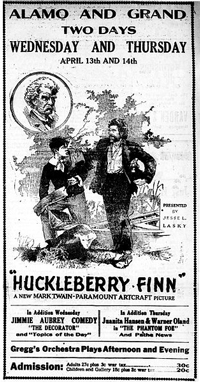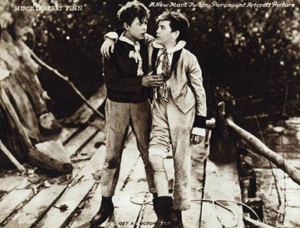
Source: looking upward, jeco, Flickr

Source: tmp06094_0738.jpg, luminafoundation, Flickr
Photographers study angles before they aim their cameras at subjects. They consider if they should shoot from above, below, or on the same level as the subject. When they shoot from below, subjects can have power, like kings on thrones. When they shoot from above, subjects may appear diminished, making viewers feel superior, like Gulliver looking down on the Lilliputians in the novel Gulliver’s Travels. When photographers shoot at eye level, viewers may connect with subjects more easily.

Source: CC No 16 Gullivers Travels, Chordboard, Wikimedia
Fiction writers consider angles, too. They select a vantage point where they can sit and watch their stories unfold. The place where a writer watches, listens, and records is the point of view. Choosing one place over another determines what can and can’t be seen and whose minds can and can’t be entered.
The person chosen to tell a story is the narrator. When a narrator tells a story as a character in the story, first-person point of view is used. A first-person storyteller uses pronouns such as I, me, my, mine, we, and our.
Often, heroes, or protagonists, tell their own stories. In Jonathon Swift’s famous eighteenth-century novel Gulliver’s Travels, Gulliver narrates his own adventures in the remote regions of the world. In this passage, Gulliver hopes to convince his captors, the Lilliputians, that he should be released on good behavior.
My gentleness and good behaviour had gained so far on the emperor and his court, and indeed upon the army and people in general, that I began to conceive hopes of getting my liberty in a short time. I took all possible methods to cultivate this favourable disposition. The natives came, by degrees, to be less apprehensive of any danger from me. I would sometimes lie down, and let five or six of them dance on my hand; and at last the boys and girls would venture to come and play at hide-and-seek in my hair.
Robinson Crusoe is another famous character in English literature. His creator, Daniel DeFoe, used the first-person POV as well. In the beginning of The Life and Adventures of Robinson Crusoe, you discover that this narrator had his name anglicized.

Now that you have read the passage above, read it again, but this time click on all of the first-person pronouns used by Robinson Crusoe as he begins to tell his adventures. If you choose correctly, the words will highlight. If you don’t find all ten first-person pronouns, reread to find the one(s) you missed.

Source: Point of View, g33k0, Flickr
First-person POV Considerations
Many writers choose a first-person point of view to tell personal, subjective stories. One appeal of first-person POV is that a single narrator relates all of the story’s action. Because you see everything through one person’s eyes, you form a close bond with the narrator.
In Daniel Defoe’s tale of survival, for example, you care about the plight of the likeable narrator and castaway, Robinson Crusoe. In the passage below, the lonely Crusoe compliments the intelligence of his new acquaintance, Friday.
But to return to my new companion. I was greatly delighted with him, and made it my business to teach him everything that was proper to make him useful, handy, and helpful; but especially to make him speak, and understand me when I spoke; and he was the aptest scholar that ever was; and particularly was so merry, so constantly diligent, and so pleased when he could but understand me, or make me understand him, that it was very pleasant for me to talk to him.

Source: Tropical Japan coastline, Yaeyama Islands, ippei + janine, Flickr
One of the most famous works of American literature, The Adventures of Huckleberry Finn, is told by a likeable teenage narrator who looks at the values of a civilized world through his own unique lens. The opening paragraph of The Adventures of Huckleberry Finn provides more than one clue about the personality of the first-person narrator.

Source: Huckleberry Finn 1920 newspaper ad, LOC, Wikimedia
You don’t know about me without you have read a book by the name of The Adventures of Tom Sawyer, but that ain’t no matter. That book was made by Mr. Mark Twain, and he told the truth, mainly. There was things which he stretched, but mainly he told the truth. That is nothing. I never seen anybody but lied one time or another, without it was Aunt Polly, or the widow, or maybe Mary. Aunt Polly—Tom’s Aunt Polly, she is—and Mary, and the Widow Douglas is all told about in that book, which is mostly a true book, with some stretchers, as I said before.

1. What ungrammatical expression leads you to believe that Huck is poorly educated?
2. What synonym for a lie—one that seems to soften the offense—does Huck use?
3. Why does Huck excuse Mark Twain for not telling the truth all the time?

Source: Huckleberry Finn (1920), Famous Players-Lasky Corporation / Paramount), Wikimedia
In the first paragraph, Huck Finn questions honesty as a value and sows seeds of doubt about everyone’s truthfulness, including Mark Twain’s. If everyone embellishes the truth, shouldn’t Huck’s own veracity be questioned?
One of the limitations of a first-person narrator is that a story’s action is filtered completely through one character, in this case Huck Finn. You might ask questions such as these at the beginning of the novel:
- “Won’t Huck try to make himself look better?”
- “How can this unschooled youth understand a complex world?”
Although you may begin reading the book with several questions about the education, honesty, and reliability of the narrator, you will most likely end the book with an appreciation for Huck’s insights about so-called “civilization.”
In addition to questions of reliability, another first-person POV consideration has to do with our knowledge of the story’s outcome. When you begin reading about Gulliver, Crusoe, or Huck, you already know that they have survived their adventures, or they could not tell you what happened in the past. Knowing the main character has survived an ordeal introduces the possibility of decreasing the story’s dramatic tension. In that sense, a first-person narrator can act as a “spoiler alert” because you know the narrator triumphed over the obstacles in the story. For this reason, getting swept into a story’s action may be difficult at first.
In the famous seafaring tale Treasure Island, for example, you know from the first sentence of the book that Robert Louis Stevenson’s narrator, Jim Hawkins, has survived his swashbuckling adventure:

Source: Treasure Island-Scribner’s-1911, N.C. Wyeth, Wikimedia
Squire Trelawny, Dr. Livesey, and the rest of these gentlemen having asked me to write down the whole particulars about Treasure Island, from the beginning to the end, keeping nothing back but the bearings of the island, and that only because there is still treasure not yet lifted, I take up my pen in the year of grace 17__ and go back to the time when my father kept the Admiral Benbow inn and the brown old seaman with the sabre cut first took up his lodging under our roof.
Even with some knowledge about this story’s outcome, you will want to keep reading to learn what happens and how much treasure Hawkins recovers.